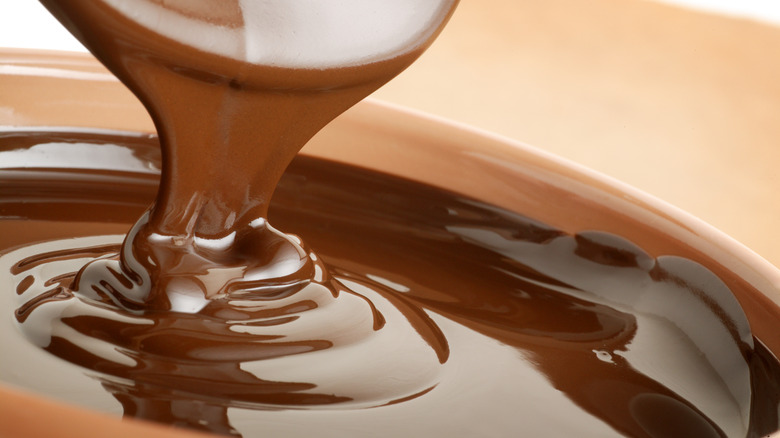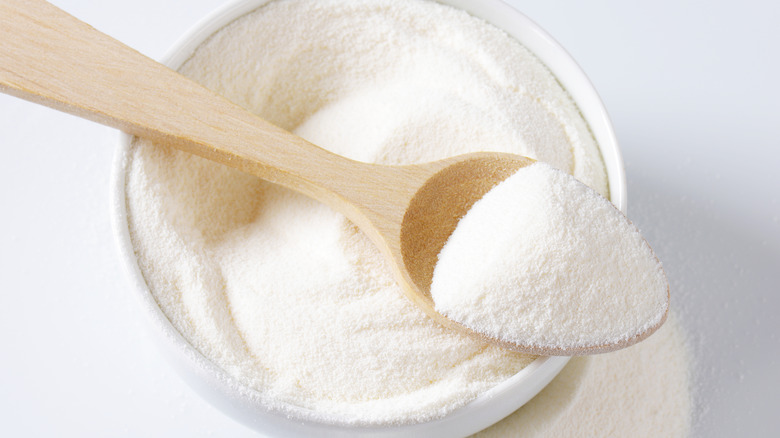The Important Role Of Milk Powder In The Chocolate-Making Process
Beloved across the globe, chocolate is a sweet treat, a thoughtful gift, and a richly satisfying baking ingredient. It can also be a mystery, especially considering how it journeys from far-flung cacao trees to the chocolate bars, foil-wrapped truffles, chocolate baking chips and chunks, and steaming hot cocoa drinks inhabiting our daily lives. The chocolate-making process can be intricate and nuanced, based on so many factors, including the specific type of chocolate involved.
Different surveys, including a Tasting Table poll from 2002, indicate that most Americans prefer milk chocolate over other forms. That's no surprise, given the rich, creamy texture, which obviously comes from its namesake ingredient: milk. But the way that milk is incorporated might not be what you imagine.
Though exceptions exist, most milk chocolate isn't created with fresh liquid milk stirred into the cocoa solids, cocoa butter, sugar, and other ingredients. Instead it comes in the form of milk powder. It's a dried, concentrated version of real milk, created by removing the water from the milk and grinding the remaining solids into a powder. This powder plays an important role in chocolate-making, as it imparts the thick, velvety consistency and full-bodied natural sweetness of real milk. You won't find that same smoothness or sweetness in dark chocolate, but white chocolate is another matter. It, too, benefits from the addition of milk powder.
Milk powder in your kitchen
While white chocolate landed on the "best chocolate" list of only about 11% of Americans in a 2021 YouGov poll, it still has many fans. It's sometimes considered a "lesser than" type of chocolate because it's made from cocoa butter with no cocoa solids or cocoa liquor. But mixing milk powder with the cocoa butter gives white chocolate a very similar creamy texture and sweet flavor to that of milk chocolate. The FDA requirements for milk content in white and milk chocolates are comparable, though the white version actually requires slightly more total milk solids of 14%, compared to 12% for milk chocolate.
If you make hot chocolate from pre-sweetened hot cocoa mixes — the kinds that come in pouches — you've likely experienced the smoothing effect of milk powder. You may have unknowingly tasted milk powder in other ways as well since it can be used as a thickener or taste enhancer in desserts, sauces, soups, homemade ice creams, breads, and more.
With some extra time on your hands, you can even make your own signature milk or white chocolates using milk powder. When sold for home-kitchen use, it generally goes by the name of powdered milk or dried milk, and it's widely available in supermarkets or online. Milk chocolate recipes often call for whole milk powder, cocoa powder, powdered sugar, and either cocoa butter or the more readily available coconut oil.

